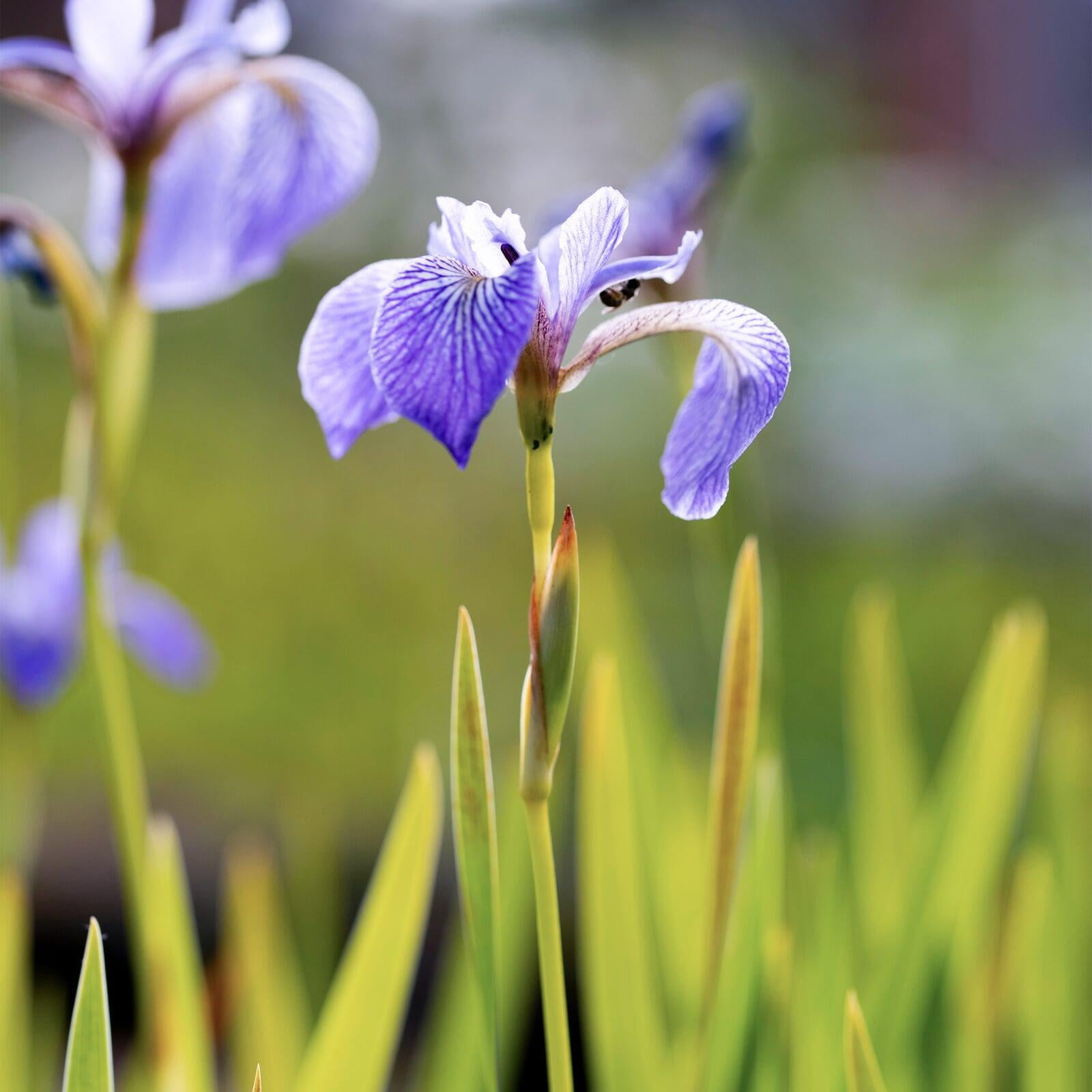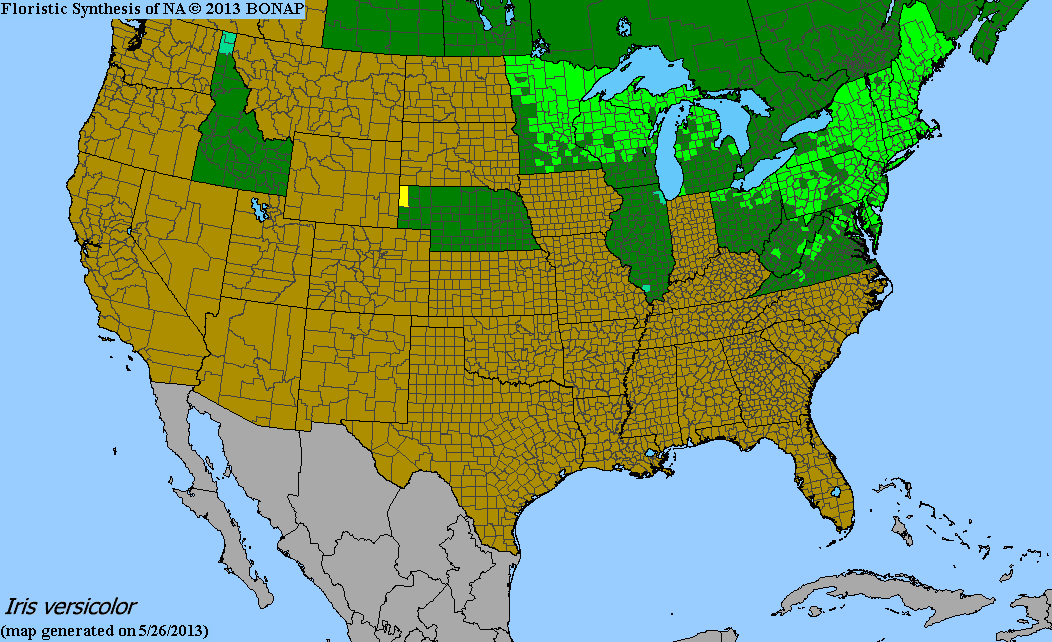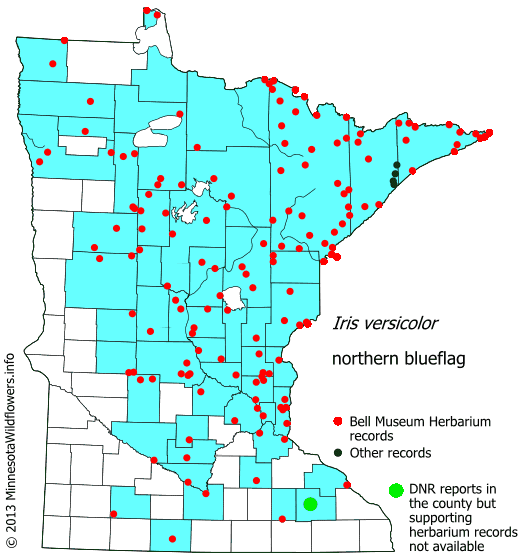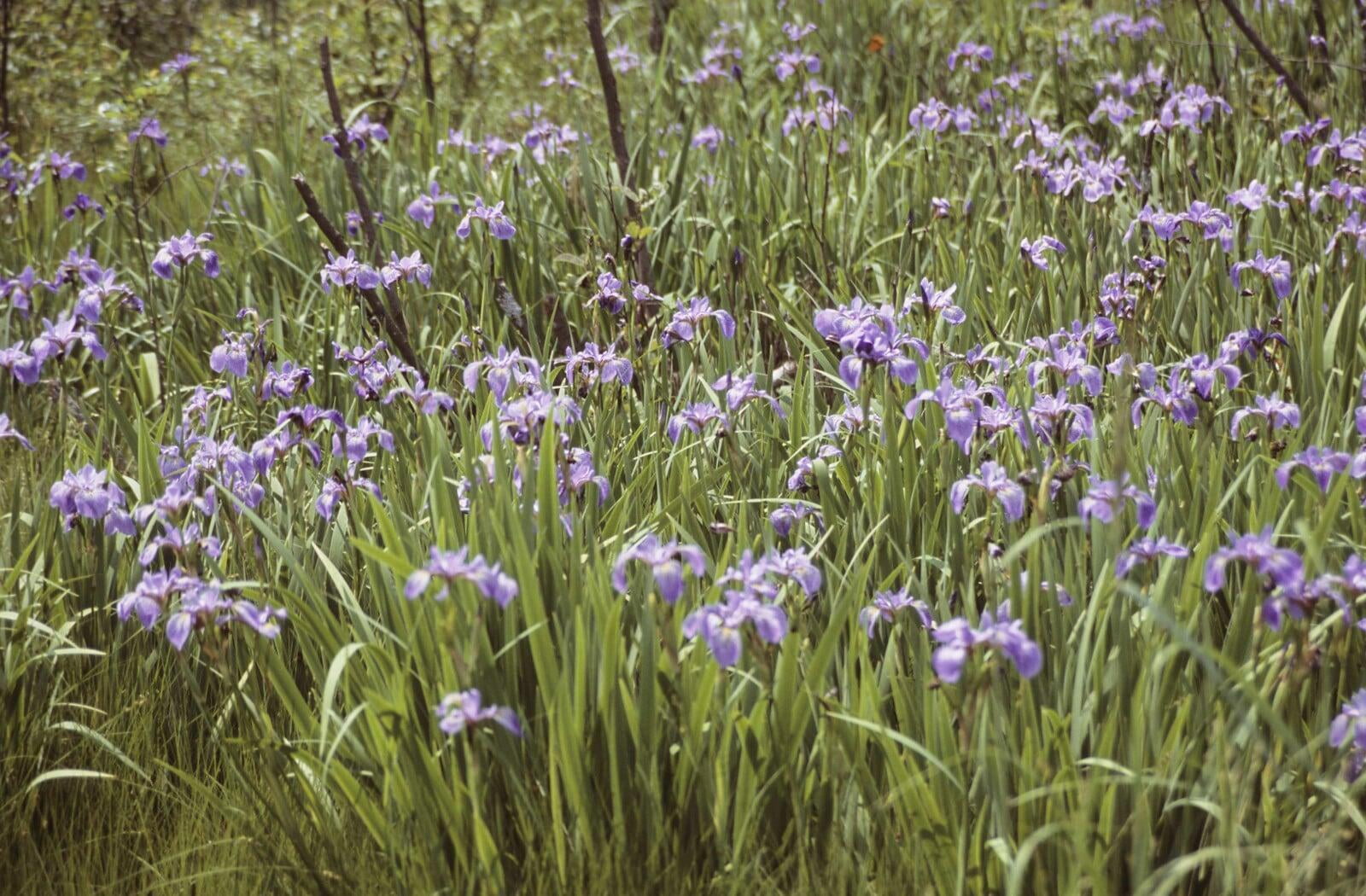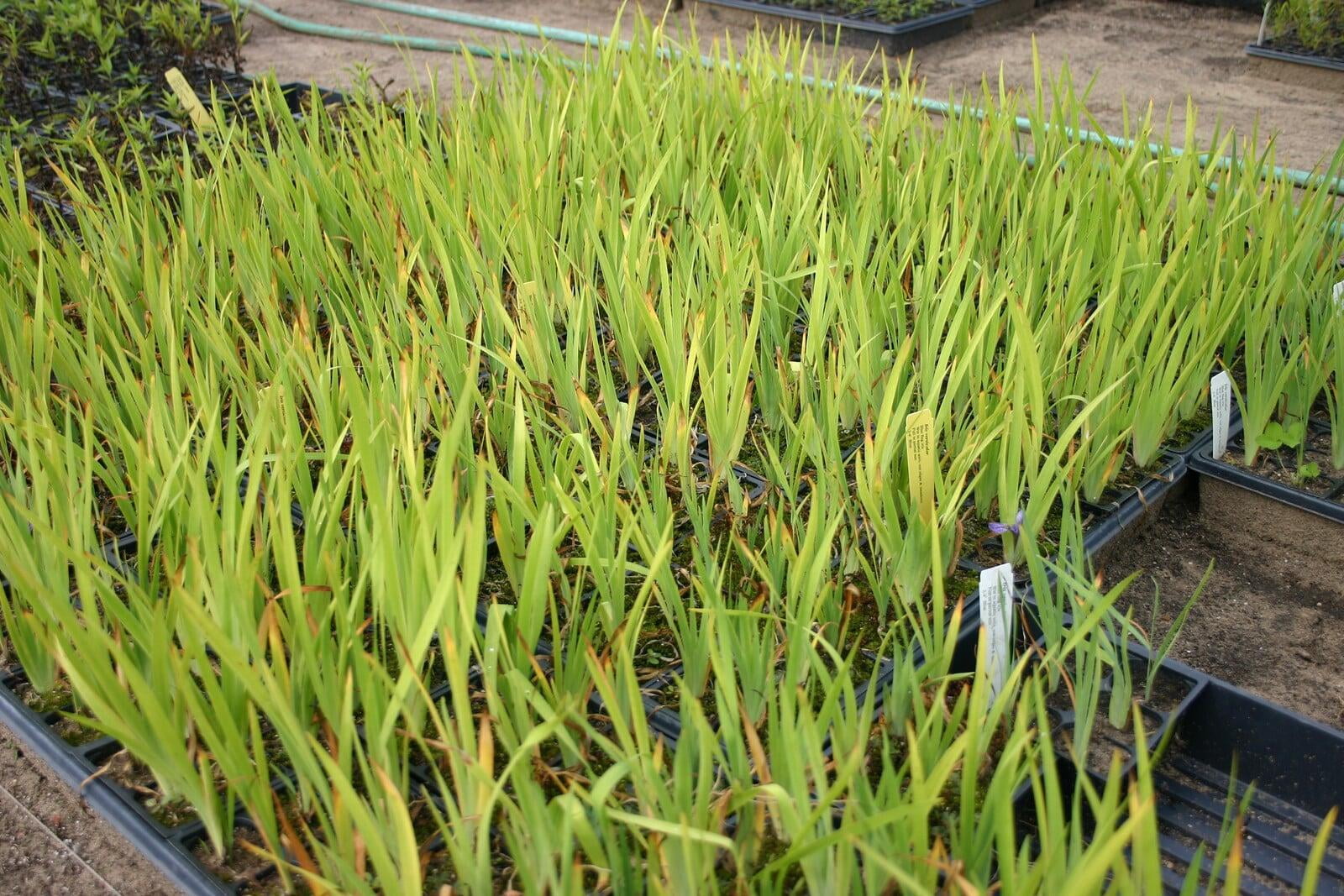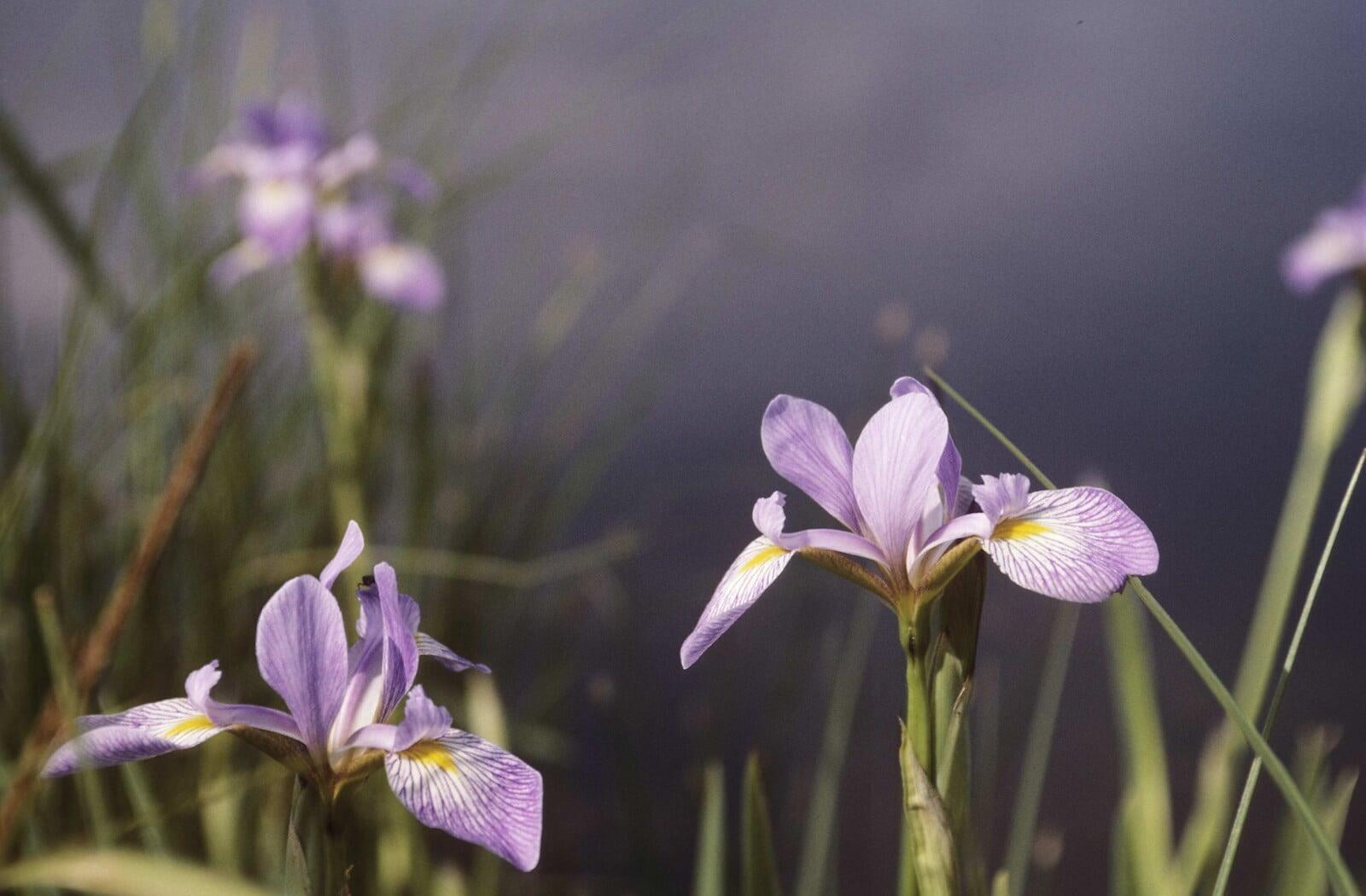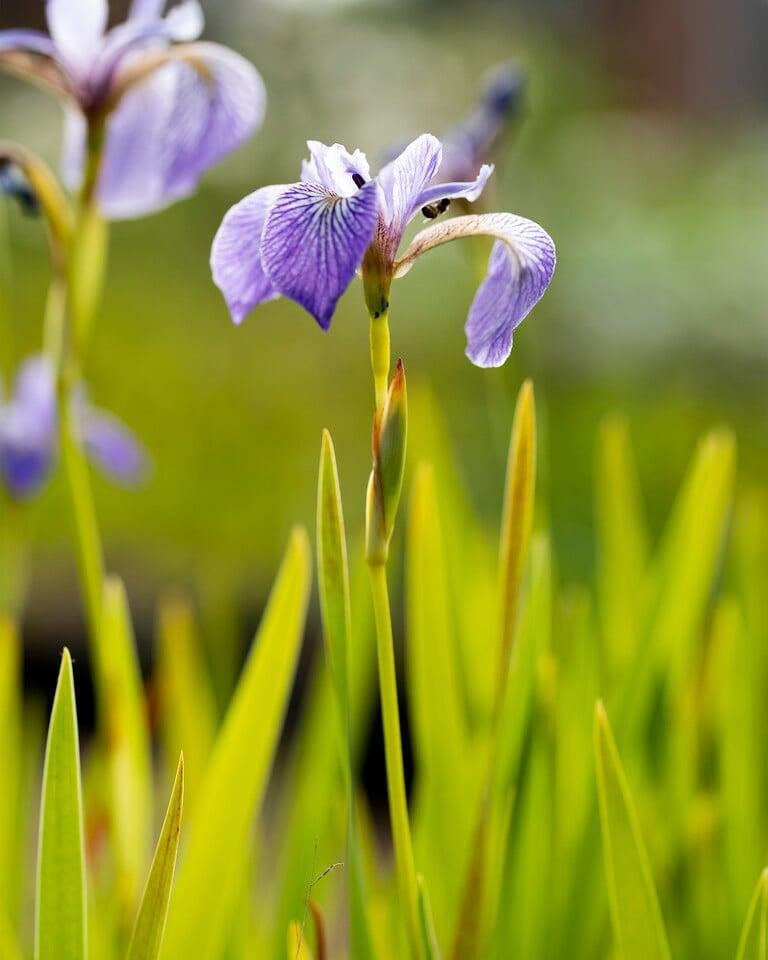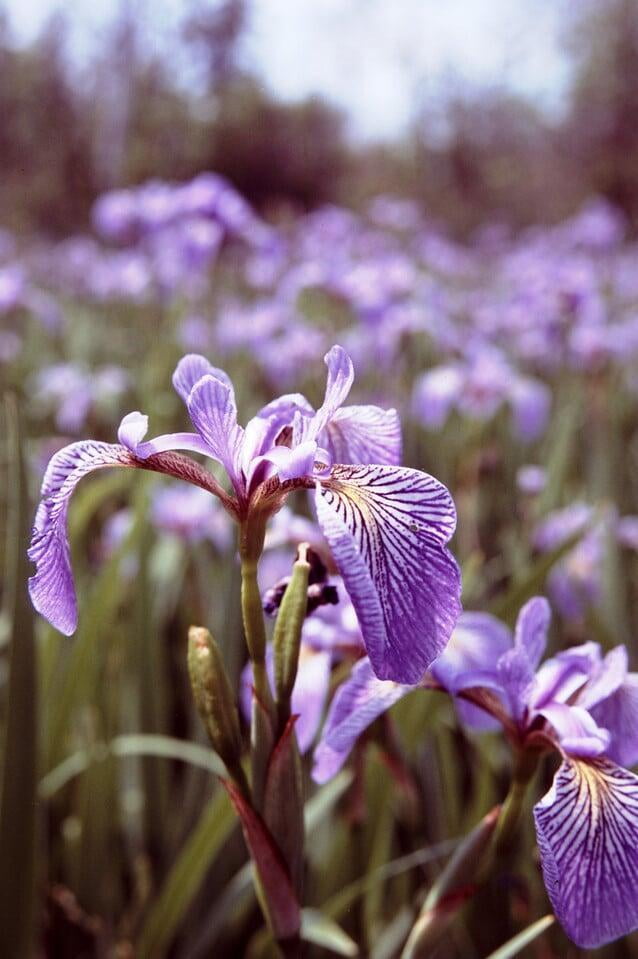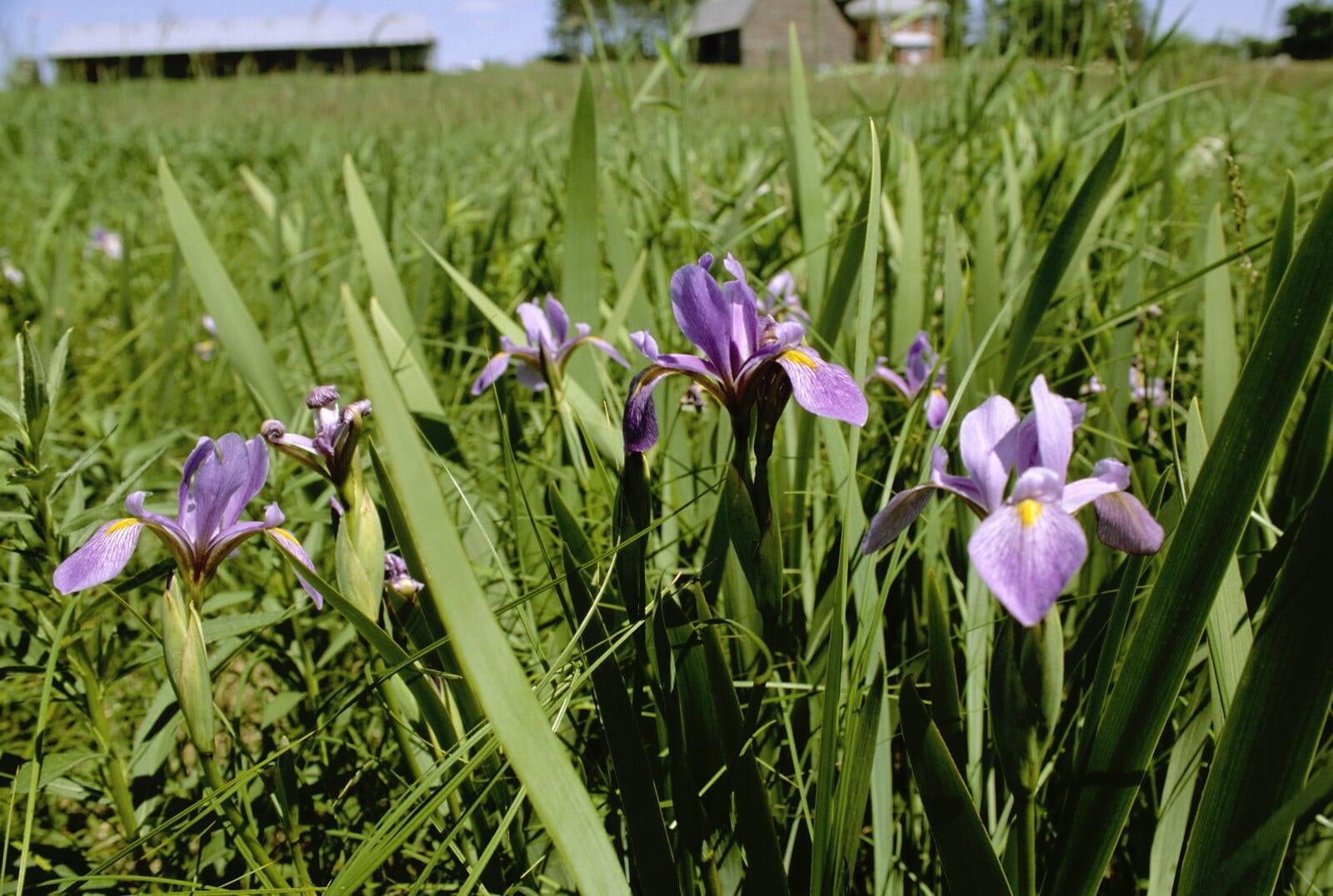Iris versicolor
Blue flag iris Description:
Iris versicolor, commonly known as blue flag iris, is a perennial flowering plant that is native to North America. It belongs to the family Iridaceae and can grow up to 1-3 feet in height with a spread of 1-2 feet. The plant has long, sword-shaped leaves that are arranged in a fan-like pattern, and its roots are rhizomatous.
The blue flag iris produces showy flowers that bloom in late spring and early summer. The flowers are typically blue-violet, but can also be pink or white in color, and have three large petals known as standards, and three smaller petals known as falls. The blooms are typically 3-4 inches wide and are arranged in clusters atop tall, sturdy stems.
This plant prefers growing in full sun to partial shade and moist, acidic soils, making it a great choice for rain gardens, pond margins, or wet meadows. It is also a popular choice for landscaping and is commonly used in border plantings, mass plantings, and rock gardens.
In addition to its ornamental value, Iris versicolor has been used for medicinal purposes by indigenous people. Its rhizomes and roots have been used to treat a variety of ailments, including rheumatism, diarrhea, and skin disorders. However, it should be noted that it is not recommended to use this plant for medicinal purposes without proper consultation with a healthcare professional.
Native Range:
Blue flag iris is found across many parts of Minnesota, however, it is more concentrated in the Northeastern portions of the state. More broadly, Blue flag iris is found mostly in Minnesota, Wisconsin, Michigan, and the Northeastern United States.
Standard Plant Information:
Plant Height: 1' - 3'
Bloom Time: May - August
Preferred Habitat: Does well in part shade to full sun. Often found in wet meadows, marshes, and along shorelines.
Sowing:
For most homeowners, the best option is to scatter seed on the ground by hand broadcasting at a minimum of 16-64 pls ounces per acre. For even coverage, we recommend that you broadcast seed in perpendicular rows across the site to ensure even coverage.
You’ll want to broadcast any grass seed first, which will get raked into the soil lightly. Next, it is ideal to mulch the area lightly with either a clean (no seed) straw or preferably with our native Little Bluestem straw, sold at our retail garden centers. After a light mulching is complete, now it’s time to broadcast your native wildflower seeds, which should not be raked into the soil. A good rain or watering is sufficient to cover the seed.
Planting:
Simply dig a hole in the soil slightly larger than the plant’s roots. Ensure that the soil line of the plant is maintained during the transfer (i.e. the plant should be at the same level with the ground as it was in the pot). Pack any loose dirt back around the plant and make sure you water it well the same day to ensure it has the best chance of survival.

